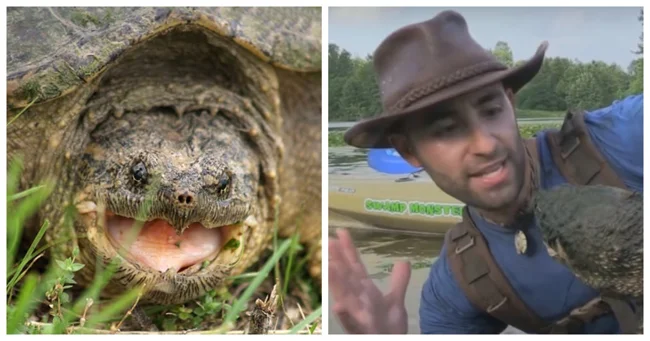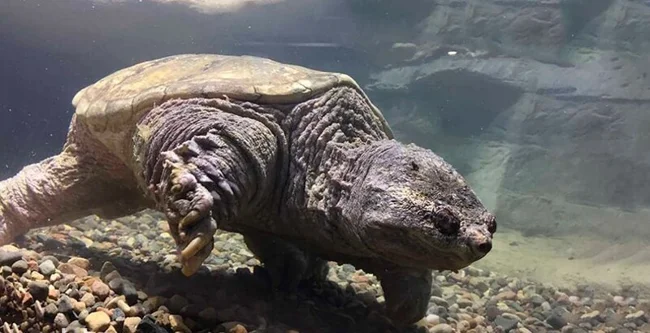The snapping turtle is a cutie that can go without bothering to breathe for six months (5 photos + 1 video)
Turtles are associated with slowness and a special, unwavering charm that other animals cannot demonstrate. But this creature is an exception. And if not the devil in a shell himself, then definitely one of his undercover henchmen. 
The inhabitant of North America is called the snapping turtle (lat. Chelydra serpentina). But the second name – biting – suits this Tortilla better. Because the seemingly slow, self-absorbed creature is a real aggressor. The turtle attacks not only small animals, but can also test the strength of its jaws on humans. But there is little joy from this test. After all, when you are bitten and scratched by an armored something weighing about 30 kg, joy is the last feeling you can feel. 
During defense, the animal quickly throws its head on a long neck towards a potential threat and bites. And it is almost impossible to predict the direction of movement. The turtle's tail is similar to a crocodile or dragon's, and its habits resemble a caiman (hence the name). 
Of course, there is no point in demonizing this shell-like creature. It doesn’t sit around for days, looking out for prey in the form of frivolous little men, so that it can pounce and bite off a couple of unnecessary fingers. The reptile demonstrates aggression when it finds itself outside its usual environment – the water. It’s impossible to run away and dive in, hence the discomfort, fear, and panic. The turtle leads a semi-aquatic lifestyle - it loves to bask on the sunny shore and frolic in the water. But only by your own choice, and not by coercion.
As for taste preferences, snapping turtles are omnivores - they eat everything they catch or find - fish, their eggs, mollusks, crustaceans, insects, snakes. They do not disdain their smaller brothers. 
Turtles are indifferent to cold. Some don't even hibernate. And those that fall asleep are carefully compacted deeper into the silt and can remain in this state until warming. And this, for a minute, is up to six months. Without breathing. A very useful ability.
To replenish oxygen reserves, they resort to extrapulmonary breathing - sometimes sticking their heads out of a cozy, slimy bed, allowing gas exchange to occur through membranes located in the mouth and throat. 
This allows them to live until it gets warm enough to start being active again, enjoying turtle life and scaring wildlife lovers with their evil bites.
